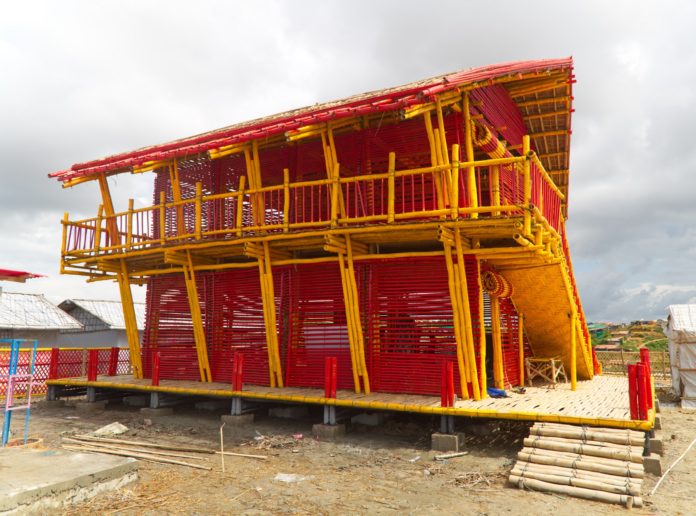DHAKA, Oct 5, 2018 (BSS/UNICEF FEATURE) – It was just a mere dream for
displaced Rohingya children to get educational facilities in refugee camps in
Cox’s Bazar.
When the traumatised children fled their homes in Rakhine state after
they faced barbaric crackdown by Myanmar military forces in August, 2017,
they had looked for a safe shelter only to survive. Education was beyond
their thoughts as thousands of Rohingya people, including women and children,
were killed in the crackdown and about 7 lakh of them were forced to leave
their homes and take shelter in Bangladesh.
But, the UN Refugee Agency UNHCR paved a way for the traumatised Rohingya
children to provide educational facilities in a pleasant manner and help them
to cope with their shocks.
On October 3, BRAC with support of UNHCR officially launched a two-
storied Temporary Learning Centre at Kutupalong camp aiming to create more
space and educational opportunities for Rohingya children.
The eye-catching building, painted bright red and yellow, is able to
house up to 240 students in two classrooms in three shifts every day – double
the number of students who could normally attend a Temporary Learning Centre
within the physical space.
Two associate professors at BRAC University’s Architecture Department
designed the learning centre using local materials and technology.
UNHCR officials said across all the Rohingya settlements in Cox’s Bazar,
there are 540,000 children of school age, but only 160,552 have spaces to
learn in temporary education centres, leaving a gap of 47 percent of
youngsters aged 3-14 years and more than 97 percent of 15-24 year-old
children who don’t have any access to education and educational facilities.
Dr Safiqul Islam, director of BRAC’s education programme, said the two-
storied design combats the space crisis in the camps and the culturally-
sensitive design allows the children for a more learning enabling environment
to ensure higher quality education.
“It is environment-friendly, and its construction and operation will not
cause any further damage to the environment. It is also designed for purpose,
and can be modified and relocated at any time,” he said.
“This is a creative and innovative way to tackle one major problem we
face in the camps – inadequate physical space to guarantee access to
educational opportunities for youngsters” UNHCR’s education officer James
Onyango said.

The pilot project brings to 39 the number of temporary learning centres
that UNHCR has established with BRAC in 20 different locations in Camp 4 and
17 in Cox’s Bazar since May 2018.
The bamboo-made school building is the first two-storey learning centre
at the refugee camps.
At this learning centre, BRAC officials say, children will initially be
taught the basics and later they will be promoted to first, second, or third
grade depending on their learning aptitude. The school will be operated in
three shifts (from 9 am to 2 pm), on six days a week. The children are being
taught both in Burmese and English.
Addressing the opening programme at Kutupalong camp, Refugee Relief and
Repatriation Commissioner Mohammad Abul Kalam said they have plans to build
more schools, with a focus on sustainability and quality. “We are making a
serious effort to send you peacefully to your homeland.”
Nesar Ahmed, a joint secretary of the Ministry of Primary and Mass
Education, said teachers from government schools in Cox’s Bazar will extend
their support to learning centres providing education to the Rohingya
children. “We will ensure that no children are left without proper education
— regardless of their nationality or birthplace,” he said.
A new UNICEF report released on August 23 last said more than half a
million Rohingya children in southern Bangladesh are being denied the chance
of a proper education, and international efforts are urgently needed to
prevent them falling prey to despair and frustration.
In a report marking one year since the start of a huge influx of Rohingya
fleeing extreme violence in Myanmar into Bangladesh, UNICEF warned children
living in the cramped and rudimentary refugee camps of Cox’s Bazar face a
bleak future, with few opportunities to learn, and no idea when they might
return home.



